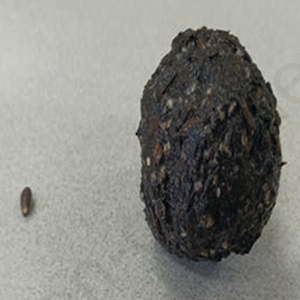A novel seed balling technology and its effect on cotton emergence, yield and fiber quality

HTML: 86
All claims expressed in this article are solely those of the authors and do not necessarily represent those of their affiliated organizations, or those of the publisher, the editors and the reviewers. Any product that may be evaluated in this article or claim that may be made by its manufacturer is not guaranteed or endorsed by the publisher.
Seed coating is the most important type of pretreatment. Since cotton is an important economic crop, the cost of its cultivation and the resulting economic benefits are undoubtedly important aspects to be considered. In recent years, the high cost of coating materials and complex production processes have prevented the widespread application of cotton seed coating. Moreover, cotton plants emerge from cotyledons, and the coating material on the seed coat does not play a role after the seed emerges. Given the above shortcomings, to adapt to the mechanized direct seeding method and to include a large number of fertilizers and fungicides, insecticides can be used together with the seed direct seeding into the soil; at the same time, this will improve the cotton seedling emergence rate, the physiological qualities of cotton seedlings after the emergence of cotton seedlings, and the resilience of cotton seedlings in the early stage of resistance ability. In this study, we devised a technique for balling cotton seeds employing components such as cassava starch, bentonite, diatomite, attapulgite, and seedling substrate. The compositional ratios of the method were determined via a growth chamber trial, and we evaluated its effect throughout the cotton reproductive period using field trials. The results showed that the emergence and emergence hole rates of the balled cotton seeds increased by 34.42% and 28.84%, respectively, compared with the uncoated control. In terms of cotton yield, the seed balling treatment increased the number of bolls per plant and the overall cotton yield. Seed balling technology is different from traditional seed pelleting or seed coating techniques. It gathers one or more seeds in seed balls, enabling the simultaneous sowing of multiple seeds of the same variety or different varieties in the same crop. Additionally, seed balls can encourage seeds to carry fertilizer and pesticides into the soil, further weakening soil-borne diseases and abiotic stresses, form a relatively stable internal environment in the soil, and ensure the germination of cotton seeds. Our findings provide a reference point to improve cotton seedling emergence through the utilization of this novel technology.
How to Cite

This work is licensed under a Creative Commons Attribution-NonCommercial 4.0 International License.
PAGEPress has chosen to apply the Creative Commons Attribution NonCommercial 4.0 International License (CC BY-NC 4.0) to all manuscripts to be published.

 https://doi.org/10.4081/ija.2023.2208
https://doi.org/10.4081/ija.2023.2208



